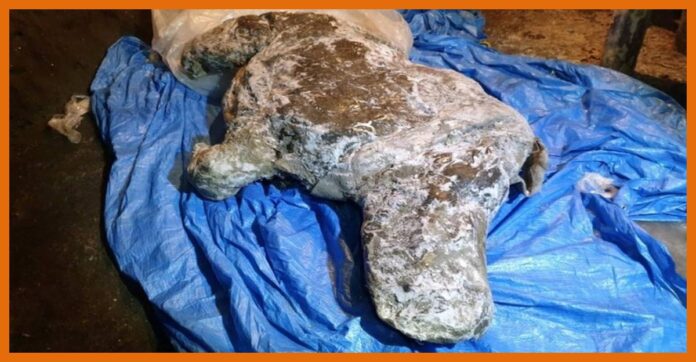In Russia’s far north, a well-preserved Ice Age woolly rhino with much of its internal organs still intact has been retrieved from permafrost.
Russian media announced Wednesday that permafrost melting in Yakutia in August had exposed the carcass. Scientists are waiting for ice roads to become passable in the Arctic area to deliver them next month to a laboratory for tests.
It’s among the best-preserved specimens of the Ice Age animal found to date. The carcass has most of its soft tissues still intact, including part of the intestines, thick hair and a lump of fat. Its horn was found next to it.
A woolly rhino carcass, taken in Yakutia, is seen in this illustration. The well-preserved carcass with much of its internal organs still intact was released by permafrost in August, and scientists plan to move it to the laboratory for studies next month. (Valery Plotnikov/Department of Mammoth Fauna Study via AP at Yakutia Academy of Sciences) ( AP )
In recent years, big finds of mammoths, woolly rhinos, Ice Age foals, and cave lion cubs have been seen as the permafrost melts quickly across large expanses.
Yakutia 24 TV cited Valery Plotnikov, a paleontologist with the Russian Academy of Sciences regional division, as saying that when he died, the woolly rhino was presumably 3 or 4 years old.
Plotnikov said the young rhino was potentially drowning.
The carcass was dated by scientists as anywhere from 20,000- to 50,000-year-old. Once it is sent to a lab for radiocarbon studies, more accurate dating would be available.
The carcass was discovered in the Abyisk district on the side of the Tirekhtyakh river, close to the area where another young woolly rhino was found in 2014. The specimen, which they called Sasha, was dated by researchers at 34,000 years old.















































